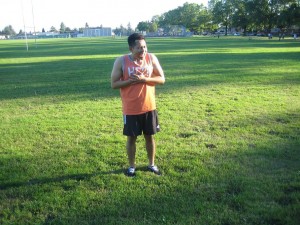Chest pain that occurs among athletes can be caused by various causes, but cardiac or heart issues should always be considered. It is a known fact that cardiac issues are bound to develop in some individuals. Even those who engage in sports are not exempted to develop these heart issues, particularly chest pain.
If an individual experiences chest pain during or after an exercise routine, it is best to have it properly assessed by a doctor in order to determine the exact cause. Once an individual is suffering from chest pain, it is important that you know the appropriate steps to perform. To learn to recognize and manage cardiac issues, enroll in a first aid class today.
Chest pain among athletes
Chest pain that occurs among athletes can be triggered by a variety of conditions including muscular pain and pain referred from the thoracic spine. Even though cardiac causes might not be suspected among young, healthy athletes, they should be considered. The possible causes of chest pain among young athletes include the following:

- Hypertrophic cardiomyopathy
- Coronary artery disease
- Acute pericarditis
- Aortic stenosis
- Pulmonary embolism
In case a cause of chest pain is suspected after a health history and physical examination, the athlete is usually referred to undergo a resting electrocardiogram. If the results of the testing are normal, an exercise test might be performed by the doctor for further assessment of the condition.
What is sudden cardiac death syndrome?
Sudden cardiac death syndrome is uncommon and can affect athletes or those who exercise regularly. Among younger athletes, the common cause of this condition is hypertrophic cardiomyopathy or other structural congenital conditions. Marfan syndrome is another cause of sudden cardiac death among young athletes but this is usually diagnosed at a young age and it is vital for the individual to avoid engaging in high intensity exercise.
What is hypertrophic cardiomyopathy?
This is considered as the most common cause of sudden cardiac death. This affects the cardiac muscle which results to an enlarged left ventricle wall. The condition is divided in two types – non-obstructive and obstructive. There are certain differences that you should be familiar with. When it comes to the obstructive type, it involves obstruction of the flow of blood to the left ventricle.
There are rarely any symptoms to indicate the presence of this condition before the individual abruptly collapses while exercising. Those who experience the early symptoms can experience the following symptoms:
- Chest pain
- Syncope
- Palpitations
Once the condition is suspected, an ECG that is requested by the doctor will reveal ST segment and T wave abnormalities and a prominent Q wave. An echocardiogram is commonly used by the doctor to confirm a diagnosis. Most cases of sudden death are caused by this condition, particularly among males.
